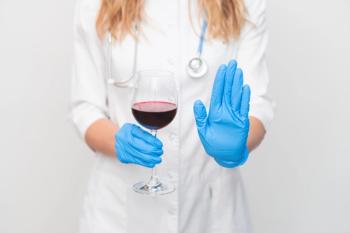
- Psychiatric Times Vol 19 No 5
- Volume 19
- Issue 5
Addiction Treatment Progress and Obstacles
New medications for the treatment of various addictions are currently under investigation. However, there are still substantial barriers, on the part of health and social policies and the patients themselves, to patients receiving these new treatments. Many of these issues were explored at the 2001 American Society of Addiction Medicine's State of the Art in Addiction Medicine conference.
Progress in developing medications and strategies for treating addiction were juxtaposed with the challenges of implementing accessible and effective treatment programs at The State of the Art in Addiction Medicine conference conducted by the American Society of Addiction Medicine (ASAM) Nov. 1-3, 2001, in Washington, D.C. The conference, themed "From Molecules to Managed Care," was co-sponsored by the Center for Substance Abuse Treatment (SAT), the National Institute on Alcohol Abuse and Alcoholism (NIAAA), and the National Institute on Drug Abuse (NIDA).
Evaluating New Medications for Addiction Treatment
Ahmed el-Kashef, M.D., acting chief of the clinical/medical branch of the division of treatment research and development in NIDA, described NIDA's efforts to develop and evaluate agents to treat addiction. The program currently involves 55 medications in different phases of development, ranging from products marketed for other indications to new molecular entities developed for specific addictions. Among the agents being evaluated by NIDA for stimulant addiction are two investigational monoamine uptake inhibitors (MAOIs); the MAOI selegiline (Zelapar, Eldepryl); the antidepressants desipramine (Norpramin), sertraline (Zoloft) and venlafaxine (Effexor); dopamine agonists cabergoline (Dostinex) and amantadine (Symmetrel); serotonin antagonist ondansetron (Zofran); g-aminobutyric acid agonists tiagabine (Gabitril) and gabapentin (Neurontin); and catechol-O-methyltransferase inhibitor tolcapone (Tasmar). El-Kashef characterized the opioid agonist-antagonist buprenorphine (Subutex) -- alone and in combination with antagonist naloxone (Narcan) -- as well as the opioid antagonist naltrexone in depot formulation (Depotrex) as very promising agents for treatment of opiate addiction.
Although naltrexone (ReVia) is principally being evaluated as a means to support abstinence from opiate use, researchers outside the United States have employed it in protocols for rapid opiate detoxification. In a July 2001 press release, researchers in Brisbane, Australia, discussed findings from the first controlled trial of heroin-addiction treatment, contrasting rapid opiate detoxification with naltrexone and general anesthesia to methadone maintenance. The researchers characterized the naltrexone approach as less expensive and more effective at reducing heroin usage than conventional treatments. One of the researchers in the Australian study, John Saunders, M.D., professor of alcohol and drug studies at University of Queensland in Brisbane, commented to the press, "I am hoping that these trials and their results will provide considerable impetus to establish rapid detoxification and naltrexone-supported abstinence treatment as a viable treatment option."
El-Kashef indicated that NIDA is also investigating neuroendocrine, electrophysiological and neuroimage changes in response to addictive drugs and remedial measures. "New interest has arisen in biological markers of addiction to identify subtypes of patients who may respond differently to specific medications," he noted. "This approach may be promising in maximizing medication effect, or predicting relapse."
Also at the 2001 conference, Raye Litten, Ph.D., chief of the treatment research branch in the division of clinical and prevention research of NIAAA, described naltrexone and the glutamatergic modulator acamprosate (Campral) as the most promising and successful medications developed to date to treat alcoholism. "Although naltrexone is not a 'magic bullet,'" Litten explained, "it appears to have a moderate effect in reducing drinking, particularly decreasing relapse to heavy drinking."
The success of naltrexone for alcoholism may depend in part upon patient characteristics. A recently published trial (Krystal et al., 2001) in a mostly male Veterans Affairs population with chronic, severe alcohol dependence did not evidence benefit from naltrexone. In the multicenter, double-blind trial, 627 patients were randomized to receive either 12 months of naltrexone, 50 mg daily; three months of naltrexone followed by nine months of placebo; or 12 months of placebo. All patients were offered counseling and were encouraged to comply with the study medication regimen and attend Alcoholics Anonymous meetings.
At 13 weeks, the investigators found no significant differences between the groups in the number of days to relapse. Also, after 52 weeks, no difference in the groups was found in the percentage of days drinking or the number of drinks per drinking day. In an accompanying commentary supporting the use of naltrexone and offering reasons why the results from the Krystal et al. study may not be generalizable to all populations, Fuller and Gordis (2001) pointed out that recovering alcoholics who are married and employed are more likely to remain abstinent and that only one-third of this population had a spouse or live-in partner and, apparent from the disability pensions, only two-thirds appeared to be employed, both which possibly affected their motivation to stop drinking. Fuller and Gordis also questioned the adequacy of counseling in this study.
While naltrexone is only the second agent to be approved by the U.S. Food and Drug Administration for treating alcoholism, some 50 years after approval of disulfiram (Antabuse), it is anticipated that acamprosate will soon be the third. Acamprosate is now approved for this indication in 40 countries. A New Drug Application is expected to be filed with the FDA in this year, according to Forest Laboratories, which would market acamprosate in the United States.
Acamprosate would offer not only a third option of therapeutic agents for alcoholism, but also a mechanism that differs from both the "reward circuit" blunting ascribed to naltrexone and the aversive effects of disulfiram. Acamprosate is thought "to inhibit the stimuli that can make alcohol 'negatively reinforcing,'" as alcohol levels in the central nervous system recede (Littleton and Mayer, 1999). In animals, it appears highly effective in inhibiting alcohol consumption prompted either by alcohol withdrawal or restriction.
In addition to affecting aspects of alcohol withdrawal, however, acamprosate exerts clinical effects independent of the presence of alcohol. At the 1999 State of the Art Conference, John Littleton, M.D., Ph.D., professor of pharmacology at University of Kentucky, described clinical findings with acamprosate. "Relapse actually seems to be prevented in many cases, rather than just ameliorated," he told attendees. "For this reason, it has been suggested that acamprosate may inhibit those cue-induced signs and symptoms that are very similar to withdrawal and that may precipitate relapse in abstinent alcohol dependent patients."
Litten has been enthusiastic about the clinical experience with acamprosate since that conference in 1999. "Alcoholic patients treated with acamprosate are more likely to complete treatment, have longer times to their first drink, and have higher abstinence rates than placebo-treated patients," he noted at the 2001 conference.
Litten also indicated that NIAAA is now investigating whether the combination of naltrexone and acamprosate is synergistic in treating alcoholism. The multi-site protocol contains tracks with acamprosate alone and in combination with naltrexone, and it also compares two types of behavioral/psychosocial therapies. Other promising agents under NIAAA research, Litten disclosed, include another opioid antagonist, nalmefene (Revex), and the serotonin (5-HT3) antagonist ondansetron.
"Development of more effective medications has the potential to vastly improve treatment outcome and reduce the suffering of millions of alcoholic patients and their families," Litten concluded.
Accessing and Succeeding in Treatment Programs
A recurrent issue at the conference was the gap between promising new treatments and the health and social policies that fail to provide addicts access to effective treatment programs. Suggesting one means of bridging the gap, Lee Dixon, director of the National Conference of State Legislatures' Health Policy Tracking Service, discussed recent RAND center research, indicating that the addition of full parity benefits for substance abuse and mental health care to private insurance plans can be accomplished with only a 3% to 4% increase in premium. The addition of only substance abuse benefits was estimated to result in a 0.3% increase.
The RAND study director, Roland Sturm, Ph.D., testified in July 2001, "Our results suggest that parity in employer-sponsored health plans is not very costly under comprehensively managed care, which is the standard arrangement in today's market place."
Substantial barriers to successful treatment outcome are also presented by the addicted patients themselves, and several speakers at the ASAM conference described intervention modalities that motivate or facilitate participation. Carlo DiClemente, Ph.D., chair of the department of psychology at University of Maryland, Baltimore County, discussed Project MATCH (Matching Alcoholism Treatments to Client Heterogeneity) and research with motivational enhancement therapy (MET) to promote treatment participation and successful recovery from substance abuse.
DiClemente (1999) previously suggested that the readiness of drug dependent patients for treatment and successful recovery occurs in stages: considering change (precontemplation stage); intermediate decision-making (contemplation stage); planning (preparation stage); making the change (action stage); and sustaining the change over time (maintenance stage). "Most treatment programs are action-oriented," DiClemente pointed out to conference attendees, "but clients seeking treatment at these programs are not always ready for action."
DiClemente (1999) distinguished between imposed and intentional change, noting that the former is often short-lived. Although supportive of therapeutic interventions within the corrections-penal system, he also noted that court-mandated attendance at treatment programs does not indicate that individuals are necessarily motivated to change substance-abusing behavior. DiClemente also contrasted readiness for change to readiness for treatment. He notes that many substance-dependent patients will relapse after the first attempt at treatment and suggested that treatment, as a time-limited event, should be considered as a part of the larger process of change.
One method to increase the level of participation intensity and the likelihood of treatment success is to incorporate contingency management, according to a presentation at the ASAM conference by Nancy Petry, Ph.D., associate professor at University of Connecticut Health Center. Petry and colleagues (2001) recently argued, "A primary benefit of positive-incentive contingency management approaches is that they increase the percent of patients who respond favorably to treatment."
Often taking the form of contingency contracting with the patient, this treatment strategy involves frequent monitoring of target behaviors, such as drug abstinence and obtaining employment; tangible, positive reinforcers for the target behavior; and withdrawal of the reinforcer when the target behavior does not occur. (For more information on contingency management, please see related article "
Petry has acknowledged criticism of contingency management approaches, however, on the basis of cost and the question of their applicability in community-based treatment programs. Clinics without research funding are unlikely to be able to offer voucher programs or other tangible reinforcers, and less expensive approaches may be necessary for adaptation in community-based settings.
Still, as noted in their research, Petry and colleagues (2001) remain hopeful:
As more and more clinicians and researchers apply contingency management procedures to treat substance-abusing patients, new developments and refinement in the techniques may emerge. We may discover less expensive yet efficacious reinforcers, determine the best behaviors to target, and evaluate the time course and optimal duration of interventions.
David Gastfriend, M.D., assistant professor of psychiatry at Massachusetts General Hospital and co-chair of the 2001 ASAM conference, discussed treatment-placement considerations. He distinguished between the matching of patients with an optimal theoretical treatment modality, as evaluated in Project MATCH, and placement matching for the least restrictive setting and resource intensity.
Criteria for placement match have been developed by ASAM, Gastfriend noted, and relate patient requirements to such treatment factors as hours of supervision and presence of medical and other specialties.
Despite progress in determining appropriate matches, Gastfriend et al. (2000) reported difficulty in implementing the solutions in the market-driven system of services reimbursement within the United States:
To solve many of these problems, it will be necessary in the future to move from a model in which levels of care are predetermined and patient's needs are clustered to fit these criteria, to a patient-based model in which patient assessment is the starting point for determining the optimal service to provide.
References:
References 1. DiClemente CC (1999), Motivation for change: implications for substance abuse treatment. Psychological Science 10:209-213.
2. Fuller RK, Gordis E (2001), Naltrexone treatment for alcohol dependence. N Engl J Med 345(24):1770-1771 [letter].
3. Gastfriend DR, Lu SH, Sharon E (2000), Placement matching: challenges and technical progress. Subst Use Misuse 35(12-14):2191-2213.
4. Krystal JH, Cramer JA, Krol WF et al. (2001), Naltrexone in the treatment of alcohol dependence. N Engl J Med 345(24):1734-1739.
5. Littleton J, Mayer S (1999), Acamprosate and alcohol dependence: another glimmer of hope? Presented at the ASAM State of the Art Conference. Washington, D.C., Nov. 5.
6. Petry NM, Petrakis I, Trevisan L et al. (2001), Contingency management interventions: from research to practice. Am J Psychiatry; 158(5):694-702.
7. Sturm R (2001), The Costs of Covering Mental Health and Substance Abuse Care at the Same Level As Medical Care in Private Insurance Plans. Testimony presented to the Health Insurance Committee at the National Conference of Insurance Legislators. Chicago; July 13.
Articles in this issue
over 23 years ago
Powerover 23 years ago
Does DTC Advertising Benefit Patients?over 23 years ago
Patient Drug Information From Mass Media Sourcesover 23 years ago
Treatment-Resistant Schizophrenia: Making the Determinationover 23 years ago
Identifying Predictors of Drug Response in Patients With OCDover 23 years ago
Managing Complianceover 23 years ago
Renegotiating the 'Contract for Safety' in the ERNewsletter
Receive trusted psychiatric news, expert analysis, and clinical insights — subscribe today to support your practice and your patients.















